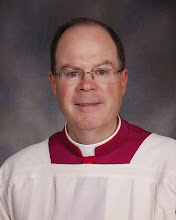

The news media reported this week that a second-grader in the U.S. was suspended from school for drawing a picture of a crucifix when he was asked to draw something that reminded him of Christmas. Apparently the stick figure of Jesus on the cross was too 'violent'.
There’s more than enough in that story to inspire a homily on political correctness gone mad or, even better, on the new intolerance that respects any and every religion—except Christianity, and especially Catholicism.
But let’s leave that aside, especially since there’s a lot of fur flying over whether or not the story was exaggerated in the papers. Instead, let’s allow the youngster’s picture to teach us a powerful lesson that might change the way we look at Christmas. For the cross and the manger are far closer than we think: as the English writer and mystic Caryll Houselander wrote, “the passion of the Man Christ on Calvary is at once revealed and hidden in the Infant Christ in Bethlehem.”
The Letter to the Hebrews points us to this by putting the words of Psalm 40 [in the Greek version] on the lips of Jesus: “Sacrifices and offerings you have not desired, but a body you have prepared for me.” The child that lies in the manger is already a sacrificial offering: he has come to die.
On Christmas Day our bulletin cover will be a beautiful icon of the Nativity by Steve Knight, the art teacher at our parish school. But if you look carefully, you will see that Mary places Jesus not in a manger, but on an altar. Elizabeth calls Mary blessed for her believing that what was spoken to her by God would be fulfilled. But the Lord spoke to her twice—once at the Annunciation, through the Angel, and later at the Temple, through the prophet Simeon. And what did Simeon prophesy? That Mary's son was to be rejected, and that a sword would pierce her own soul.
Although Simeon’s prophetic words were not yet spoken, they were being fulfilled even in the poverty of the stable. So we are not meant to visit Bethlehem without turning our thoughts—and hearts—towards Calvary.
Mr. Knight has not only provided the cover for our Christmas bulletin. He drew at my request this simple wooden manger. That Jesus was placed in a wooden crib at his birth and nailed to a wooden cross at his death inspired Caryll Houselander to write an astounding book called The Passion of the Infant Christ. She shows how the Cross casts its shadow on the manger scene that we tend to look at sentimentally rather than prophetically:
“On Calvary He was naked, stripped of His garments and of all that He had. He was naked and stripped of all that He had in Bethlehem. …
“On Calvary He was lifted up, helpless and held up for men to look upon. In Bethlehem He was lifted up, helpless, to be gazed upon. …
“By the Cross stood Mary, His Mother; by the crib knelt Mary, His Mother.
“At His birth He was called ‘King of the Jews.’ At His death He was called ‘King of the Jews.’ The claim to be King threatened His life in Bethlehem. The claim to be king cost His life in Jerusalem.
“In Bethlehem Christ slept His first sleep in His Mother’s arms; on Calvary, Christ slept His last sleep in His Mother’s arms.”
These are just some of the poetic comparisons Caryll Houselander uses to bind Christ’s birth in Bethlehem to His death on Calvary. But she doesn’t stop there. Christ came from the darkness of the womb in Bethlehem, and from the darkness of the tomb in Jerusalem; at Bethlehem there were angels in the fields and over the stable, while in Jerusalem they stood beside His empty tomb.
So not only Christ’s death but His resurrection is already unfolding in the dim light of the stable. A body has been prepared for him—the Word has become flesh—for a purpose which already has begun to be accomplished in the manger.
A simple image shows us the truth of what Caryll Houselander wrote. As you can see, Mr. Knight has drawn us a good solid wooden manger. But turn it just slightly—and the same planks form not a manger, but a cross.
Let us adjust our perspective on Christmas in the same way, looking at the big picture, the whole picture. Sentiment is fine as far as it goes, but it does not go to the heart of the matter. The mystery and the message of Christmas is not only Christ’s birth, but His suffering, death and resurrection as well.
[Note: I am still working at keeping my promise of some reflections on scandals in the Church. Thanks for your fine comments and patience!]

No comments:
Post a Comment